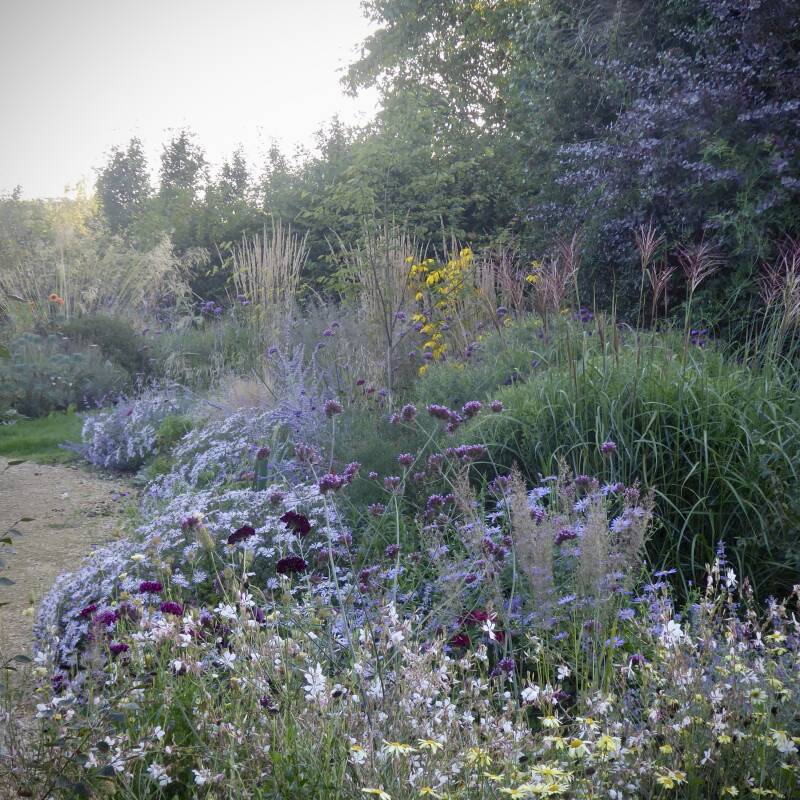Witch hazels are not shrubs to buy on impulse; they are expensive and their positioning needs to be just right. During the longest six weeks of winter Hamamelis has great garden value however, with no shortage of good varieties that have even more going for them than curling flames of blossom. Here are nine of our favorite witch hazels to plant in a landscape.
Photography by Britt Willoughby Dyer for Gardenista.
Hamamelis mollis ‘Fred Chittenden’

Although yellow is not universally loved, it does have the advantage of glowing in winter, when red (and orange to an extent) is less easy to pick out. Chinese Hamamelis mollis is the reliably scented one and a parent to the Hamamelis x intermedia strains listed below, bred for the added advantage of winter color.
A witch hazel, or collection of witch hazels, will provide protection and a framework in summer, without being spectacular in any way. Plant them where they intercept winter sunshine, to light them up and provide a backdrop for spring bulbs. Although they are hardy (safely ranging from USDA zones 5 to 8), their scent is less easy to catch if they are planted in an exposed position. Some people breathe on their witch hazels, to release their spicy notes. Alternatively, flowery twigs can be brought indoors.
Hamamelis x intermedia ‘Barmstedt Gold’

A recipient of the Royal Horticultural Society’s Award of Garden Merit, Hamamelis x intermedia ‘Barmstedt Gold’ grows in a vase shape and shares its warm yellow hues twice, in its flowers and its autumn foliage. Witch hazel can grow (slowly) in pots, though it prefers moist, well-drained open ground, in neutral to acid soil.
Witch hazels can take a while to settle in and need to be watered during dry spells in their first few years. They are edge-of-woodland plants; in other words they respond to dappled shade and sunshine.
Hamamelis x intermedia ‘Robert’

Another award winner, the orange flowers of ‘Robert’ are preceded by orange leaves in autumn. This is where careful consideration is helpful: ‘Robert’ and the darker varieties need to be grown near a path so they can be seen and smelled. There is also a lesson to be learned here from the planting at the Royal Horticultural Society’s garden at Wisley, where rusty colors contrast with decidedly green leaves of cyclamen and dark brown mulch. They would not show up amid decaying perennials.

Hamamelis x intermedia ‘Diane’

‘Diane’ is considered a good red, with lively red leaves, plus scent—though not strong. It has an RHS Garden Merit award to back up its promise of all-around garden merit. ‘Diane’ is named after the daughter of Belgian plant breeders Robert and Jelena de Belder, who have bequeathed some of the best Hamamelis x intermedia strains. Requires space, growing up to 13 feet tall, and wide, if given the chance.
Hamamelis x intermedia ‘Livia’

Like the powerful Roman granny of Emperor Claudius, ‘Livia’ has a strong personality. Striking autumn leaves are followed by well-scented carmine flowers. Likely to grow more stout than tall.
Hamamelis x intermedia ‘Hiltingbury’

If you decide on a more subtle, cranberry-and-grapefruit juice palette such as ‘Hiltingbury’, shown, note that the foliage in autumn is anything but. As chlorophyll retreats to the center, the leaves’ edges become fringed in fall colors before succumbing to scarlet all over. Scented.
Hamamelis x intermedia ‘Harry’

Benefits: Early flowers, wonderful color, good upright habit (reaching a height of eight to 13 feet). Drawback: No autumn color.
Hamamelis x intermedia ‘Rubin’

An unusual variety in deepest, richest red, ‘Rubin’ eventually grows to about 13 feet in height and spread.
Hamamelis x intermedia ‘Sunburst’

It is not a given that witch hazels flower on bare branches. Sometimes they hold on to their leaves, in the manner of beech or hornbeam. This can cause great irritation, with a sense of being mis-sold a particular variety. Leaf retention can happen for a variety of reasons, including suckering stock or early frosts. Hands-on gardeners go out on a crisp day and snip off the dead leaves; others, myself included, think that they add to the intrigue and strangeness of these arresting plants.

A winter garden can be a colorful one. For more tips, see Witch Hazel 101: A Field Guide and find more winter bloomers in our curated guide to Shrubs 101, including:
- Landscape Ideas: Blazing Color with Red Twig Dogwood, 5 Ways
- Camellias 101: A Guide to Planting, Care, and Design
- 5 Favorite Shrubs: Add Color to the Winter Garden
- Red Twig Dogwood 101: A Guide to Planting, Care, and Design
- Landscape Ideas: Boxed in by Boxwood? 5 Shrubs to Try Instead
- Mahonia 101: A Guide to Planting, Care, and Design
Finally, get more ideas on how to successfully plant, grow, and care for witch hazel with our Witch Hazel: A Field Guide.
Finally, get more ideas on how to plant, grow, and care for various shrubs and hedges with our Shrubs: A Field Guide.








Have a Question or Comment About This Post?
Join the conversation